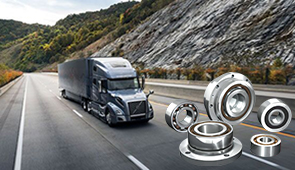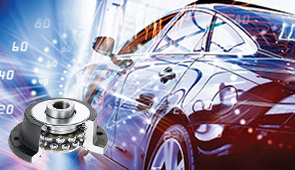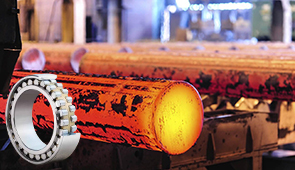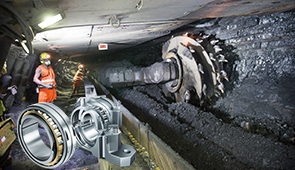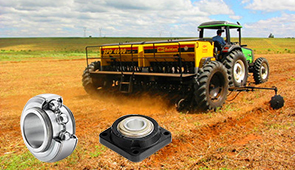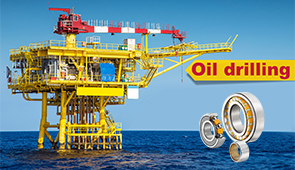Understanding the ABEC Scale: How to Choose the Right Skateboard Bearings
Choosing the right skateboard bearings can significantly impact your overall skating experience, but deciphering the technical jargon, like the ABEC scale, can feel overwhelming. If you’ve ever wondered what those numbers on your bearings mean or how they influence your ride, you’re not alone. This article dives into the ABEC scale, a standardized system used to measure bearing precision and performance. Whether you’re a seasoned skater looking to optimize your gear or a beginner trying to make sense of technical specifications, we’ll break down everything you need to know to make an informed decision. By the end, you’ll understand not only how the ABEC rating affects speed and durability but also how to select bearings that align with your skating style and goals.
What is the ABEC Scale and How Does it Affect Bearings?
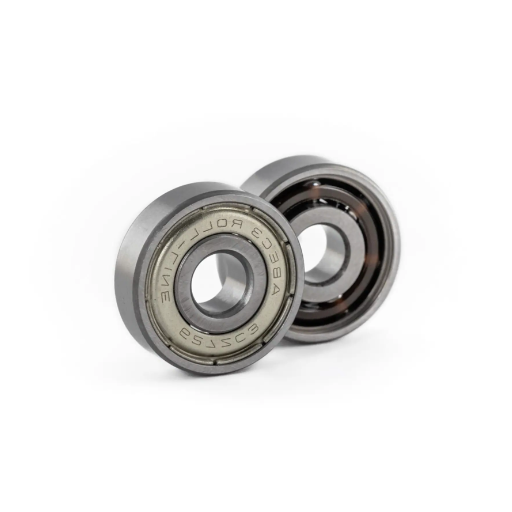
Understanding the ABEC Scale and Its Tolerance Levels
The scale created by the ABEC showcases the precision and ordering of ball bearings into classes of levels. In simpler terms, it measures the tolerances of bearing manufacturing, that is, how loose or tight the parts in the assembly are. The scale goes from ABEC 1 to ABEC 9 with increments of 1, and the bigger the number, the smoother the performance and the lower the resistance on the bearing. However, it is important to remember that the ABEC rating does not measure material quality, lubrication, or any other factors that construct bearing performance and influence durability significantly.
Bearings with increased ABEC rating are noticed to work better under high-speed conditions due to machines or tasks that require hey are required to accomplish, since they require minimal friction and increased speed. This is the reason why ABEC 7 or ABEC 9 is standardly used by skaters who strive for maximum efficiency while skiing downhill or speed skating. Regardless, bearings with lower ratings like ABEC 1 or ABEC 3 can still perform effortlessly in everyday recreational skating, particularly under more forgiving conditions. This ultimately depends on the person’s terrain and skating needs.
While the ABEC scale is useful, it remains one of many factors influencing the overall quality of a bearing. Many advanced bearing manufacturers focus on more critical considerations; for example: material composition, sealing, load and spatial restrictions often overlooked by the ABEC scale. These factors combined often surpass the set standards. In conjunction with other specifications important to the skater’s preferences, the ABEC rating should together meet performance requirements skaters look for.
ABEC Ratings: From ABEC 1 to ABEC 9
The ABEC rating system is one of the most renowned systems that classifies ball bearings depending on their precision and tolerances, which spans between ABEC 1 and ABEC 9. Higher numbers indicate expansion in the tightening of tolerances and added precision during manufacturing. It is important to highlight, however, that a higher ABEC rating does not translate automatically to enhanced benefits for every single use case. In fact, for cases such as skateboarding or inline skating, impact resistance and lubrication are imperative factors that govern performance.
- ABEC 1: Basic functionality is the name of the game for ABEC 1 bearings, and at this grade, the tolerances become the loosest, thus marking the lowest tier of the scale. Economically, they are very efficient and are primarily used in cases where precision is not a mandatory need. However, additional constraints with high-speed or high-performance applications make them a less favorable choice due to lackluster smoothness and higher friction.
- ABEC 3 to ABEC 5: For recreational skaters, ABEC 3 and ABEC 5 bearings are the sweet spot; while offering a decent amount of precision, they are also very common. The most noticeable difference is the price-ABEC 3 sizes have less smooth motion while being more durable, whereas ABEC 5 sizes have smoother operation and provide slightly better performance for moderate speeds.
- From ABEC 7 to ABEC 9: ABEC 7 and ABEC 9 are made for high-speed uses and require a great degree of precision. These bearings operate at high speeds and require tight tolerances to reduce vibration and greatly improve efficiency. For skating purposes, the advantages of ABEC 7 or ABEC 9 are not fully appreciated due to the surrounding factors and lateral forces at play.
When it comes to separating the exacting demands of a work challenge, an ABEC grade provides a good indication of precision and tolerances, but additional specifications have to be looked into such as material’s endurance, the quality of lubrication used, and the grade of environmental wear resistance in the bearing.
How Do ABEC Bearings Impact Skateboard Performance?
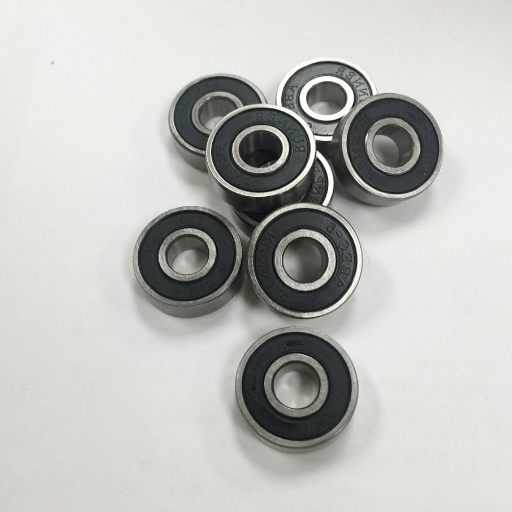
Role of Precision Bearings in Skateboarding
The performance aspects of skateboarding, like smoothness, speed, and overall riding performance, are determined by precision bearings. The ABEC system of rating, while only one of the factors determining the quality of a bearing, provides a measurable metric for precision and tolerance, which affects the performance of the skateboard while in use. Other than the ABEC rating, multiple other indicators determine how the bearings function in skateboarding. The following are five ways in which precision bearings affect the performance of skateboards:
- Speed and Efficiency: Skaters are able to achieve higher speeds with less effort as precision bearings reduces rolling resistance. This is best highlighted with the ABEC 7 and ABEC 9 rated bearings that are manufactured for tighter tolerances translating to achieving better speed on smooth surfaces.
- Durability Under Stress: Skaters who experience repeated impact while doing tricks requires heavy grade bearings, which is made from stainless steel and ceramic, for ultimate effectiveness due to the high-grade materials ensuring better durability against wear. This makes it ideal for skateboarders who feel the exposure to harsh environmental conditions.
- Noise reduction: Well lubricated precision bearings generate minimal noise enhanceing the rider’s experience. Tight manufacture supports proper alignment and make sure to function without facing early bearing failure longitudinally supporting all riders.
- Versatility in Cross-Country Terrain: The seals and lubricants of the bearings are designed to resist the penetration of dirt, moisture, and other debris, allowing seamless movement in different terrains. Such bearings are very advantageous for skaters on rough surfaces as they are able to maintain smoother rolling regardless of external conditions.
- Effects on Skateboarding Acceleration: Acceleration among high-performance skateboarders is enhanced with the use of high-precision bearings that have minimal internal friction. This is especially useful for those skaters performing tricks and requiring a lot of speed in a very short time; quick responsiveness is crucial.
It is crucial to take into account these factors when choosing precision bearings for a particular type of skateboarding and other turning environmental factors like weather conditions. Such specifications alongside the ABEC rating allows skateboarders to adjust their setup for the best performance and durability.
The Influence of Bearing Precision on Skate Speed
A skateboarder’s speed relies heavily on the precision of a skateboard bearing due to its friction-minimizing factors and its ability to ensure smooth rotation. High-precision bearings allow wheels to spin more effortlessly because they are manufactured with tighter tolerances, which reduces resistance. Reduced friction not only enhances a skateboard’s speed but also improves the energy efficiency, enabling skateboarders to maintain momentum with ease. For instance, high ABEC-rated bearings perform exceptionally well because their minimal vibration while rotating at high speeds leads to smoother functioning.
Placing too much trust in an ABEC rating can be misleading because not all skateboarding bearings prioritize the same factors. Bolts or bearings meant for skateboards designed using advanced materials such as ceramic or titanium alloys tick off all the factors like AEC handicap, measuring real-world conditions, factoring impact resistance or durability. Sure, ceramic bearings are more expensive, but reduced friction and cooler temperatures during use make them perfect for competitive or high-intensity skateboarding.
Apart from that, elements like dust, moisture, and other debris might interfere with the effective functioning of a bearing. Modern machinery demands utmost accuracy, and such components usually come with shields or seals that need to be maintained s protect them from any internal contamination, preserving dependable operation throughout the life of the part. Steps like lubrication and washing are pivotal for maintaining the bearings in an operable state and functioning at peak efficiency.
Comparing ABEC-Rated Bearings for Different Skate Styles
The Annular Bearing Engineers’ Committee (ABEC) rating helps to measure how accurate and effective bearings are. This rating as well affects performance in different skating styles. Still, it should be highlighted that the ABEC skaters use, ranges from 1 to 9. Higher bearing efficiency grades do not result in best performance for every skate type. Factors like stuborness, materials used, and lubrication also play an important role.
- Street Skating: Bearings of this kind brunt of the abuse of hits and rough guiding. While riding the streets, skaters like the simplicity of use without the need for constant adjustments. This is the case as Street skaters have more durability and toughness-focused priorities. This situation creates a preference for low-number ABEC ratings, like 3 and 5, which offer greater accuracy in the busy urban environment.
- Vert Skating: Due to the need for ramp and halfpipe boosting over a thousand tricks extraction power needed is vert. Acceleration when scooping the ramp has to be very high. As a balanced choice these days these types of tricks are performed with the help of speed and precision offered by ABEC 7 rated bearings, specially designed from reinforced materials to withstand heavy loads faced regularly.
- Cruising and Long-Distance Riding: Smoother rides at higher cruising speeds for longboarding or cruising are prioritized. In this instance, ABEC 7 or ABEC 9 bearings are the best options as they provide the most efficiency and the least rolling resistance, aiding in maintaining momentum over long distances.
While ABEC ratings help evaluate a bearing’s precision and granularity, they also need secondary considerations like the type of lubricant used (oil or grease), shields, and even the material (ceramic or stainless steel) that the bearings are made from to fit the rider’s preferred style. By optimizing bearing selection for specific applications, skaters can more effectively apply the scientific principles of friction and rotational speed to optimize performance and control.
Are Higher ABEC Ratings Always Better for Skateboard Bearings?
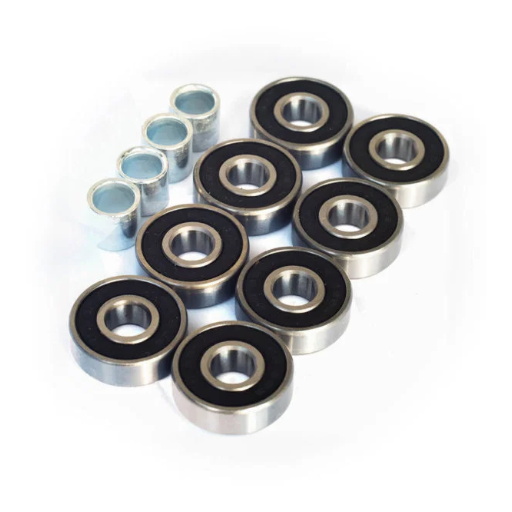
High ABEC vs. Low ABEC: Debunking Myths
The common misunderstandings involving high ABEC ratings versus low ABEC ratings includes the following; the greater the ABEC rating does not ensure enhanced skateboarding performance, ABEC ratings lack assessing measurement of material construction and strength of skateboard bearings, and other non-industrial applications precision differences are minimal.
| Aspect | High ABEC | Low ABEC |
|---|---|---|
|
Velocity |
No significant gain |
Adequate for skating |
|
Longevity |
Material-dependent |
Material-dependent |
|
Expense |
Higher |
Lower |
|
Accuracy |
Higher tolerances |
Sufficient for skating |
|
Usage |
Industrial |
Skateboarding |
|
Sound |
Minimal difference |
Minimal difference |
|
Build Quality |
Not rated by ABEC |
Not rated by ABEC |
Factors Influencing Bearing Performance
For skateboard bearings, ABEC ratings are important, but they are not everything. Industrial standards do not consider things like lateral forces and impact resistance when skateboarding is concerned. The type of materials used, lubrication applied, construction, and maintenance practices are what determine the performance accuracy of bearings. For example, skateboarding would be a lot easier on ceramic and stainless steel bearings because those materials have better resistance to moisture and corrosion, which prevail in wet and humid environments. In addition to that, these bearings undergo intense usage, which increases the odds of friction occurring. Using high-grade lubricants would alleviate that as well as prolong the lifespan of the bearings.
In my opinion, I still think that people having an ABEC rating misconception higher than 9 would not be favorable for skateboard bearings. The reasoning behind this is the fact that skateboarding exposes the bearings to tension, which is not considered when using ABEC grading systems. It’s virtually effortless to perform better, for example, a bearing with a lower ABEC rating but better construction, lubrication, and all other factors one can think of. It would be a lot easier for skateboarding scenarios compared to the conditions set by the rating system. Most skaters would prefer the smoothness, consistency, and almost lack of performance deterioration from the tolerances that are bound to be set by the grades.
In conclusion, selecting suitable bearings involves assessing your skating style, the environment, and the circumstances under which you are skating. If skateboard-specific maintenance and material quality are prioritized, performance and reliability will be good no matter the ABEC number given. In my experience, the best bearing is the one that achieves the best compromise of durability, speed, and low maintenance.
When to Choose ABEC 7 Bearings over ABEC 9
Skaters and people who do roller sports that want to have speed, accuracy, and multi-featured prowess tend to prefer ABEC 7 bearings. Unlike the ABEC 9 bearings that work with extreme accuracy and are ‘over-engineered’ for skateboarding scenarios, ABEC 7 bearings endure real-life conditions, maintain robustness, and provide high-speed capabilities. ABEC 9 bearings are simply ‘too sensitive’ to be efficient for most skating applications.
ABEC 7 bearings are errorless when it comes to operating in complex terrains. Surfaces that have a moderate amount of debris, are uneven, or even the vibration that comes with skate boarding are handled flawlessly when using these bearings. This makes the ABEC 7 a better choice for general street skating, cruising, and any scenario where exposure to riding surface imperfections is expected.
ABEC 7 bearings are cost-efficient when compared to the precision-focused ABEC 9 bearings. With only a slight compromise on speed, they tend to be more budget-friendly. This makes them increase value for those riders who look to minimize costs while ensuring dependable performance.
That is why, about practical efficiency, lifespan, adaptability, and in semi-controlled environments that do not permit fully automatic ultra-precise setups to function at their peak, ABEC 7 bearings are suggested.
How Does the ISO Standard Compare to the ABEC Scale?

Understanding ISO 492 and Its Role in Bearing Precision
ISO 492 is an international standard that provides a comprehensive evaluation framework for rolling bearings by defining a precision and performance assessment. Unlike the ABEC scale, which tends to overemphasize high-speed operations and rotational accuracy, ISO 492 considers a broader spectrum of factors that influence bearing performance. This standard encompasses several critical parameters that engineering applications requiring high levels of precision can depend on. Here are five important elements of the ISO 492 standard:
- Dimensional Tolerances: ISO 492 describes tolerances concerning the external features of the bearings, specifically the outer diameter, bore diameter, and width. These components of measurement elision guarantee that the bearings are designed to mesh accurately and operate without any displacement within the angles of the shaft and housing in which they are positioned.
- Running Accuracy: The standard describes feasible values of the geometrical deviations within operational accuracy of bearing elements like radial runout, axial runout, and face runout. This guarantees that under smooth and stable operational riders with demanding specifications, machines carry out the required operations, during which any persisting vibrations are not at the risk of being transmitted to the body structure of the equipment.
- Radial Clearance: ISO 492 sets boundaries for radial internal clearance which is one of the indicators of bearing effectiveness, as it partially determines the bearing performance defined by factors such as load allocation and heat production in operational situations.
- Roundness and Cylindricity: The standard has stringent guidelines for the evaluation of the roll elements and the raceway’s cylindricity. All of these geometric parameters are necessary to control vibration, noise, and wear during prolonged use.
- Surface Roughness: ISO 492 also lists the requisite surface finish of bearing parts. The level of surface roughness pertaining to friction, lubrication, and life span of the bearing are much needed.
ISO 492 would help aid in these factors and ensure that the bearings manufactured would meet modern industrial applications, benchmarking them in engineering and manufacturing.
Which Standard is Better for Skateboard Bearings?
Evaluating the standards of skateboard bearings requires thorough consideration of speed, endurance, environmental factors, and other skateboarding-specific features. The most recognized standards are the ABDC (Annular Bearing Engineers’ Committee) scale and ISO 492 standard for rolling bearings.
Both ABEC and ISO 492 mark bearings fulfilling requirements with varying accuracy. While ABEC is often considered the most basic scale focused only on tolerances and precision causing rotational movements, ISO 492 takes into account surface roughness, dimensional and form deviations leading to a more overarching evaluation.
Encompassing the range of an industry-grade application, ISO 492 does allow bearings to endure heavy stress from impact at different velocities while managing friction, vibration, and electronic temperature. The adaptability of ISO bearing standards makes it valuable in industrial conditions, but results in lesser precision for specialized features required in skateboarding. Further, enhanced ABEC ratings bring reduced material strength, a lack of protection against filth, lower sustaining capabilities, lubrication, and dirt resistance, resulting in decreased overall performance at different elevations and skateboarding conditions.
In the case of skateboarders, it is clear why ABEC is often advertised and more readily understood by the public. However, pairing bearings rated using the ABEC system with additional features such as material grade (i.e., steel or ceramic), proper seals for dirt exclusion, and correct lubrication systems requires additional precision. On the other hand, bearings tested against ISO 492 will perform better in terms of endurance and consistent operation, especially when considering more accelerated riders or individuals with greater dependability demands. In the case of skateboarding, which requires a greater degree of efficiency, one should aim at manufacturers that provide more than just ABEC or ISO scores.
What Are the Best Practices for Maintaining Skateboard Bearings?
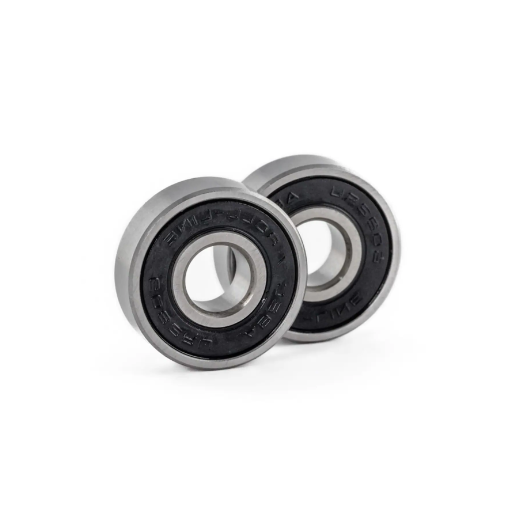
Importance of Lubrication in ABEC Bearings
Lubrication should be done correctly on ABEC bearings to promote performance, functionality, and longevity. Properly placed lubricants give bearings better performance and prevent wear or corrosion of materials. Skateboarding applications subject bearings to high speed and heavy usage, well-lubricated bearings have better precision maintenance and stress resistance, wear less heat and corrosion generation.
- Reduced Friction and Wear: Having well-lubricated ABEC bearings results in smoother operation, wear resistance, better precision maintenance, and better stress handling while under load. Efficiency in lubrication leads to reduced contact of metal surfaces, thus reducing friction wear and metal contact.
- Corrosion Prevention: Corrosion can be a result of time, environmental contaminants, and moisture exposure. Proper placement of lubricants will prevent rust which in turn will shield the components, thus keeping the functions of the bearing constant without impairment.
- Improved Heat Dissipation: Loss of precision and deformation can be caused by overheating. Overly high set speed can lead to overheating, but due to lubricants, heat is dissipated, which improves bearing performance, allowing it to withstand friction
- Enhanced Performance Reliability: Skateboarding requires predictable and repeatable functionality, and achieving the desired performance is largely determined by correctly placed lubricant. Properly lubricated bearings help maintain rotational speed and ensure dynamic societal shift is met.
- Longer Service Life: The service life of ABEC bearings can be economically beneficial and reliable in the long run since regular lubrication reduces the number of replacements required.
Effective use of ABEC bearings with respect to skateboarding requires that one understands lubrication, its importance, and follows the maintenance schedule ardently.
How to Clean and Maintain Your Skateboard Bearings
Proper cleaning and maintenance of skateboard bearings is very important to ensure that there is maximum efficiency, extended life, and less friction produced. Below is a thorough guide that is simple to follow step by step:
- Remove the Bearings From The Wheels: Savely take out the nuts securing the wheels using a skate tool or a wrench. Smoothly slide the wheels off the axles exposing the bearings. Remove the bearings from the wheels using a bearing remover tool or by partially inserting the axle into the bearing’s center and levering it out. Be careful of the shields and races while removing them during this procedure.
- Take Off The Shields On The Bearing: The majority of skateboard bearings have metal shields that are either rubberized or made of some other material and can be removed to give protection to the internal parts. Using a small pin or a precision screwdriver, like a screw driver that can take off screws of small size, shields can be easily pried open. Make sure that the shields are placed securely somewhere to avoid putting them somewhere unknowingly.
- Clean The Bearings: Add the bearings in a container with a solvent cleaner such as isopropyl alcohol that has a 99% concentration, or even a bearing cleaner that bathes the bearings consecutively. Shake the container for a few minutes so that any form of debris, dirt, or grease is scraped away that has built up. A soft-bristle brush can also be used for stubborn grime for additional cleaning. Water-based cleaners should be avoided at all costs because they could leave behind leftover water, which could rust the bearings.
- Thorough Drying: Post-cleaning, all bearings must sit on a lint-free cloth until they air dry completely. Do not use compressed air or any other form of blowing device, as they will spin the bearings at high speeds without any lubrication which is extremely damaging. Conclusively verify there is no moisture before proceeding to the next step.
- Apply Fresh Lubrication: Excessive amounts of oil might cause sticky bearings. To eliminate friction and slowdown of activity, use a light viscosity liquid specially designed for bearing lubrication. For optimal results, use one of the best lubricants for high precision bearings, which utilize thin oil or light grease. Oil or grease must not be used in excess, as it will only cause wear, so the inner part of the bearing must be supplied with oil. Care must be taken so that all elements can easily move. Bearings must then be turned gently ot guarantee that the oil is fully spread over each part that acts as a rolling element.
- Replacing Bearing Shields: To discourage any form of unwanted particles from finding their way to the bearing, the shields must be firmly secured to the bearing. Also, no gaps must be left at the fitted ends.
- Reinsert the Bearings into the Wheels: Gently press the lubricated and cleaned bearings back into the wheels. Bear in mind to place equal force around the edge as placing it on one side can distore the bearing. If possible, utilize a bearing press tool to achieve ideal angles.
- Reattach the Wheels to the Skateboard: Replace the skate wheels on the axles by sliding the wheels into place, and use your skate tool to secure them with the axle nuts. Check to see that the wheels turn freely without excessive tightness.
Following this maintenance routine, the skateboard bearings would continue to perform optimally for a long-lasting period even when subjected to stress. For recreational skating, the procedure can be done every two to three months, but it should be done more often if used heavily or if exposed to dirt, rain, or other unpleasant conditions.
Extending the Lifespan of High ABEC-Rated Bearings
Bearings with precision engineering and high-speed functionality have uniquely shaped ABEC ratings. And like every other tool, these bearings require proper maintenance in order to increase their lifespan. Routine cleaning is an absolute must if a bearing is to last long, especially purging any moisture, debris or dirt from internal components. The right bearings lubricants can also greatly increase the health of a bearing by lowering friction and wear.
A clean environment is not the only necessity. Dusty and wet surroundings are equally as damaging to a bearing, making it more prone to degradation and contamination. In order to avoid these problems, a powerful water-resistant lubricant should be applied. Protective coatings are highly useful but have their limits, hence must be used wisely as overwashing a bearing can destroy seals or strips some protective coatings.
Bears are hard to deal with silently so it’s no wonder they’re quite hard on bearings, wear and tear wise. Sudden acceleration changes put immense stress on a bearing which are prone to crushing easily. To bypass this ailment, the biguns must ensure proper alignment of wheels and axles as misalignment creates uneven stress points on a bearing.
Lastly, adding bearing shields and similar protective accessories can be helpful. These add-ons assist in keeping dirt out while holding needed oil. With a bearing maintenance schedule and taking some preventive action regarding the environment and mechanical forces, the functional life and reliability of high ABEC-rated bearings can be improved significantly.
Frequently Asked Questions (FAQ)
Q: What is the ABEC scale, and how does it relate to skateboard bearings?
A: The ABEC scale, set by the Annular Bearing Engineering Committee, is a system for rating the precision and tolerance of bearings. It helps determine how well the bearing can handle high speeds and smoothness. While it is a useful guide, it does not solely determine the best bearings for skateboards or roller skates.
Q: How does the ABEC rating affect the speed capabilities of skateboard bearings?
A: The ABEC rating measures the dimensional tolerances and precision of bearings. Higher precision ratings like ABEC7 or ABEC9 generally indicate better speed capabilities, as they have tighter tolerances, allowing them to perform well at higher RPMs.
Q: Are higher ABEC ratings always better for skateboards and longboards?
A: Not necessarily. While higher ABEC ratings like ABEC7 and ABEC9 offer higher precision, they are not always needed for skateboards and longboards. Other factors such as material quality, lubrication (lube), and the type of bearings can be more critical in determining the performance.
Q: What are some common materials used in skateboard bearings?
A: Skateboard bearings are often made from chrome steel, known for its durability and ability to withstand high rockwell hardness. The inner ring and raceways are polished to enhance performance by reducing friction.
Q: What is the role of a spacer in skateboard bearings?
A: A spacer is used between the bearings in the wheel to maintain proper alignment and reduce stress on the bearings during use. This helps in achieving optimal performance and increasing the lifespan of the bearings.
Q: How important is lubrication in maintaining skateboard bearings?
A: Lubrication is crucial for reducing friction and preventing wear and tear on the bearings. Proper lube ensures smooth operation and can significantly extend the life of the bearings by reducing the chance of overheating.
Q: What does the term “rated ABEC bearings” mean?
A: “Rated ABEC bearings” refers to bearings that have been evaluated and assigned an ABEC rating by the American Bearing Manufacturers Association. This rating provides a standardized measure of the bearing’s precision and potential performance in industrial machinery and other applications.
Q: Can rated ABEC bearings be used in industrial machinery?
A: Yes, rated ABEC bearings, particularly those with higher precision ratings like ABEC9, are often used in industrial machinery due to their ability to handle high RPMs and maintain performance under demanding conditions.
Q: What is the significance of the lowest ABEC rating, like ABEC1?
A: The lowest ABEC rating, ABEC1, indicates a basic level of precision. While it may not offer the same performance as higher-rated bearings, it is still suitable for applications where high speed and precision are not as critical, such as general-purpose use.
UCTH213-40J-300 with Setscrew(inch)
CNSORDERNO: Normal-duty(2)
TOGN: UCTH213-40J-300
SDI: B-R1/8
SD: 2 1/2
UCTH212-39J-300 with Setscrew(inch)
CNSORDERNO: Normal-duty(2)
TOGN: UCTH212-39J-300
SDI: B-R1/8
SD: 2 7/16
UCTH212-38J-300 with Setscrew(inch)
CNSORDERNO: Normal-duty(2)
TOGN: UCTH212-38J-300
SDI: B-R1/8
SD: 2 3/8
UCTH212-36J-300 with Setscrew(inch)
CNSORDERNO: Normal-duty(2)
TOGN: UCTH212-36J-300
SDI: B-R1/8
SD: 2 1/4
UCTH211-35J-300 with Setscrew(inch)
CNSORDERNO: Normal-duty(2)
TOGN: UCTH211-35J-300
SDI: B-R1/8
SD: 2 3/16
UCTH211-34J-300 with Setscrew(inch)
CNSORDERNO: Normal-duty(2)
TOGN: UCTH211-34J-300
SDI: B-R1/8
SD: 2 1/8










